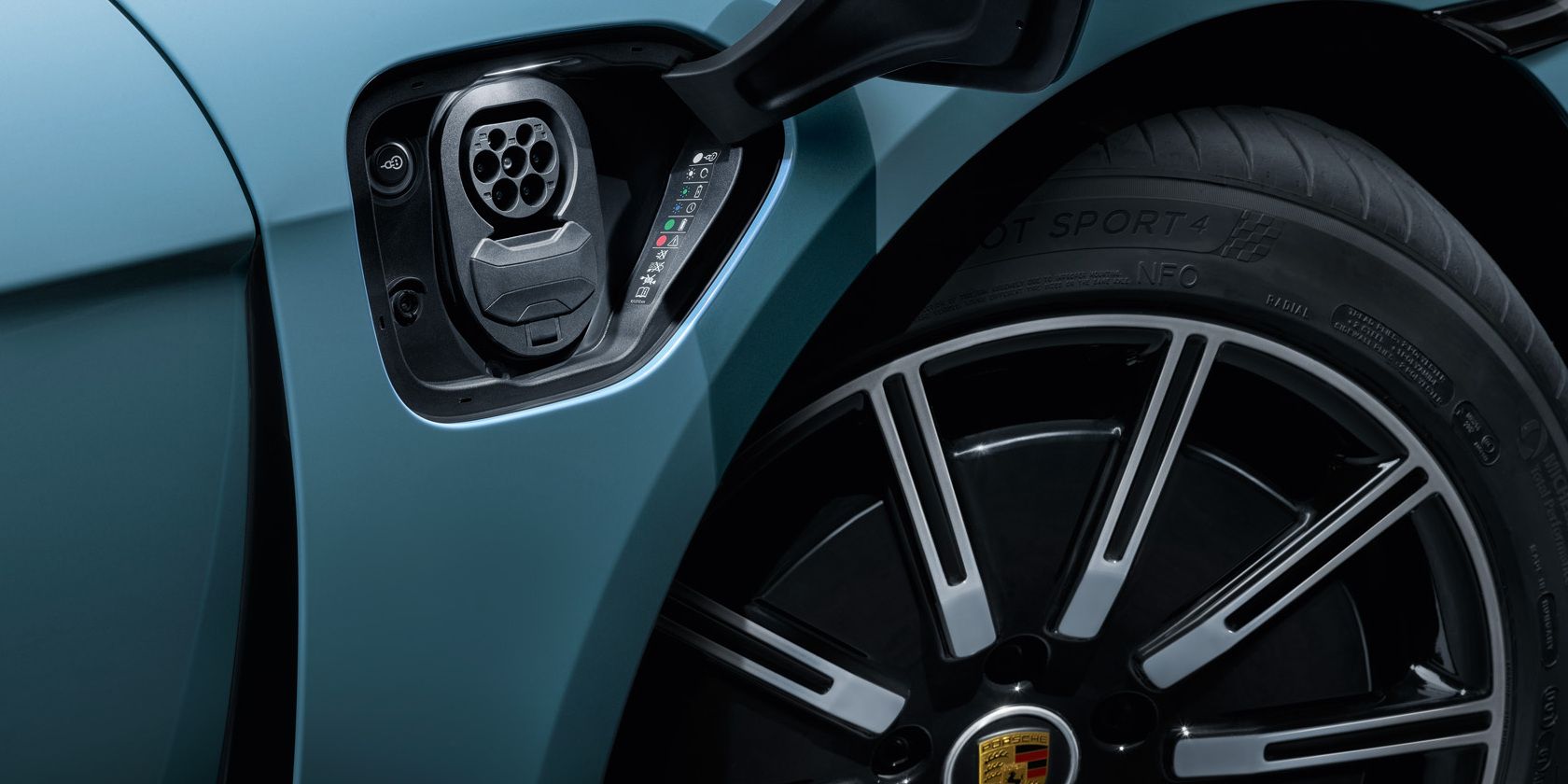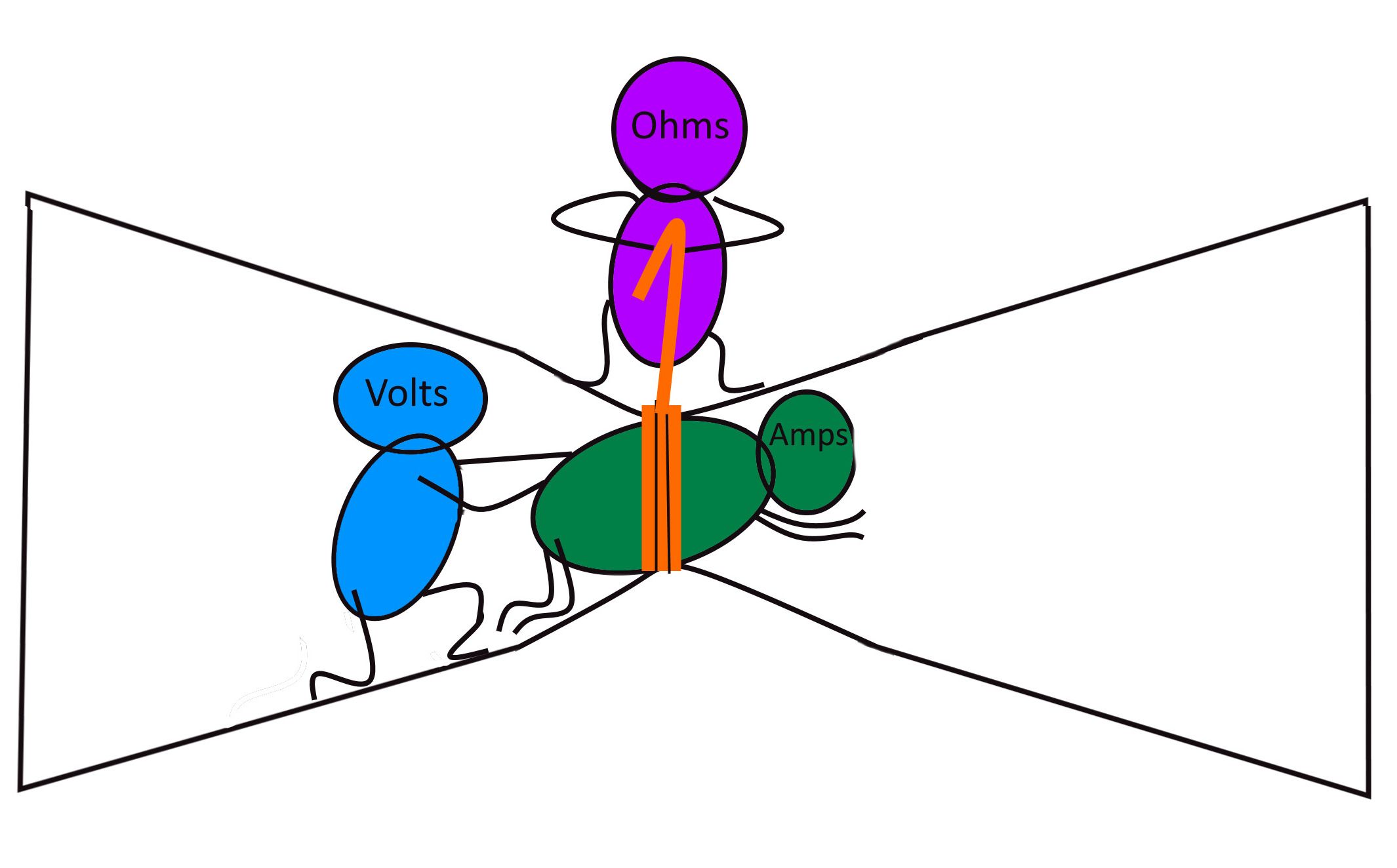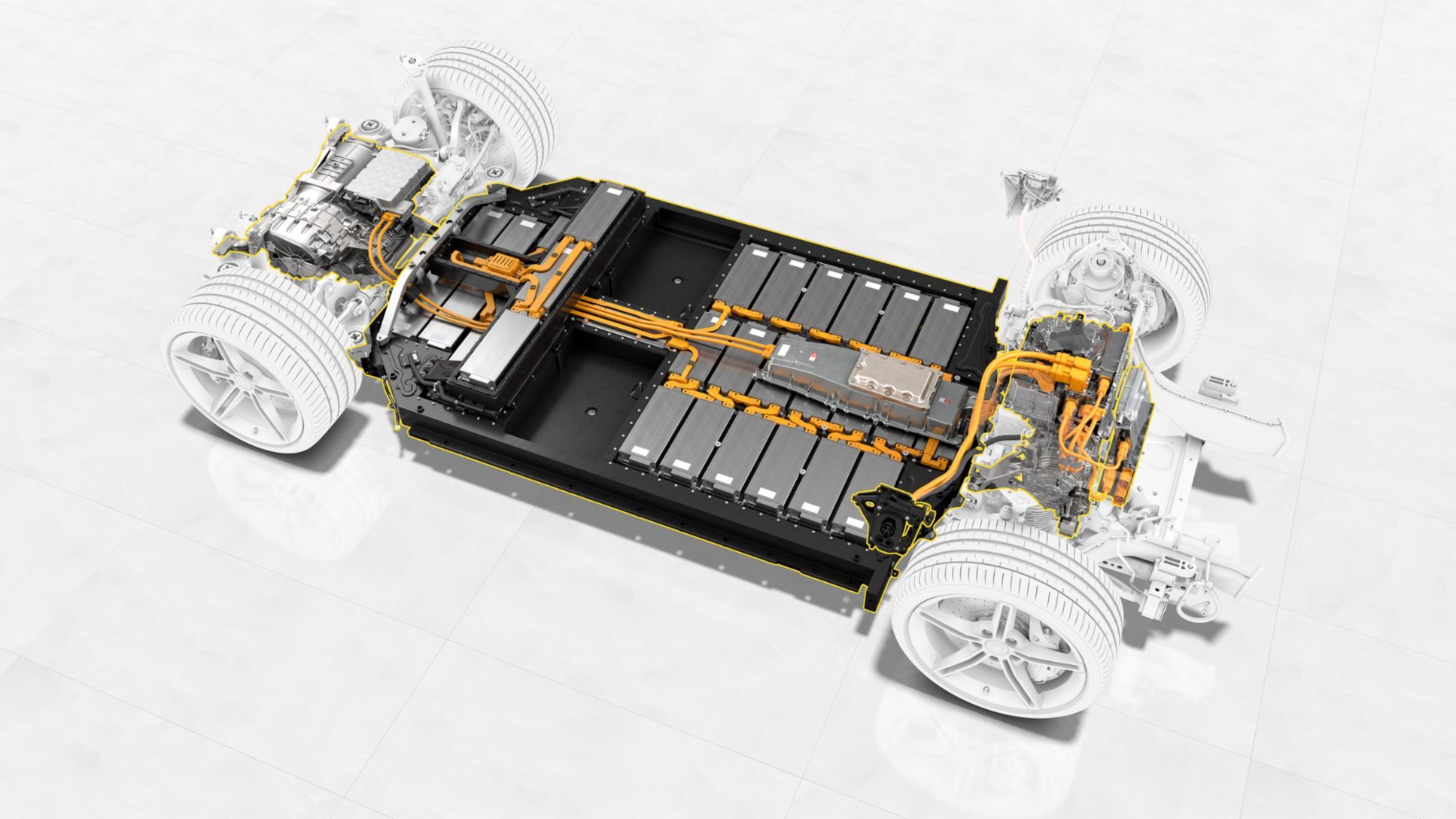Simple math: 800 is twice 400.
Though most EVs today use 400-volt architecture, 800-volt may become the standard in the future.
Learn what 800v architecture entails, which vehicles already have this capability, and why it might become the future of EV charging.
What Is 800v EV Charging Architecture?
Even if you've forgotten Ohm's law, you may be familiar with the three levels of EV charging.
Level 1, your simple household outlet, is 120 volts. Level 2 is 208 to 240 volts (if you don't have an EV, picture that chunky plug your dryer uses), and Level 3 is 400 to 900 volts.
Many a high school physics teacher has used some iteration of this cartoon to explain the relationship between ohms, watts, and volts.
Volts are the units of measure for voltage, which can be thought of as electrical pressure. Amps are the unit of measure for current, the number of electrons flowing through a circuit. Ohms are a measure of resistance, the force that inhibits the flow of electrons.
Ohm's law: voltage = current * resistance.
You can rearrange this equation in any algebraic fashion you please; the result is the same. If you increase voltage, you can decrease current.
3 Advantages of 800v EV Charging
Right now, 400v is by far the most common architecture. Switching to 800v holds numerous advantages
1. Charging Time
Even though Google Maps can point you toward the fastest charging stations, it still takes longer for EVs to charge than their ICE counterparts. For example, it takes about 15 minutes for a Tesla to achieve up to 200 miles of charge at a Supercharger station.
In comparison, filling up the gas tank takes 3-5 minutes. Though the US legally mandates a maximum 10 gallons/minute flow rate on gasoline entering the fuel tanks of light-duty passenger vehicles, this is about a third of the time.
While reminding people that patience is a virtue might prove helpful, the fact that 800v reduces charging speed is its main selling point.
Less charging time means lower wait times at busy stations. Collectively, this will help to quell range anxiety for many would-be EV owners.
2. Battery Size
800v architectures can support smaller batteries. A smaller battery translates to lower weight and higher efficiency.
3. Engineering for Sustainability and Efficiency
800v architecture requires EVs to use less precious metals. For example, copper wires can be thinner, cutting down on the number of resources that must be used.
Heat loss reduction is another benefit of 800v architecture. Thinking back to our cartoon, by putting the blue creature on steroids, there is lower resistance which allows for thinner cables because there is less heat energy to disperse.
This will lead to higher ranges and more robust performance (due to lower weight).
If you're still curious about the benefits of 800v, this video does a deeper dive:
3 EVs With 800v Charging
Some vehicles already have 800v architecture; others say it's coming soon.
1. Porsche
The Taycan was the first production vehicle with an 800v battery.
The Audi e-tron GT (Audi and Porsche are both owned by the Volkswagen Group) shares the Taycan's J1 performance platform and also boasts an 800v battery.
2. Lucid
In a 2020 press release, Lucid Motors claimed the Air would be the fastest-charging EV with a charging rate of up to 20 miles per minute or 300 miles of charge achieved in only 20 minutes.
3. Hyundai/Kia
The Hyundai IONIQ 5 and Kia EV6 use Kia EV6 use 800v architecture.
Up & Coming: Rivian, General Motors, Lexus, and Toyota
A number of manufacturers have announced 800v batteries are on the near horizon, including Rivian, GM, Lexus, and Toyota.
800v Infrastructure Challenges
Finding 800v charging stations will be the first challenge EV owners face. The most efficient way to make 800v chargers backward-compatible with existing stations remains to be seen.
Despite the expenses and engineering, as per Automotive News, Dirk Kesselgruber, president of the ePowertrain division at GKN Automotive, said, "In 2025, the majority of applications coming into the market will be 800 volt."
It's Time for 800v EV Architecture
It's coming. Only time and money will tell when. It'll be fast. And we'll love it.





